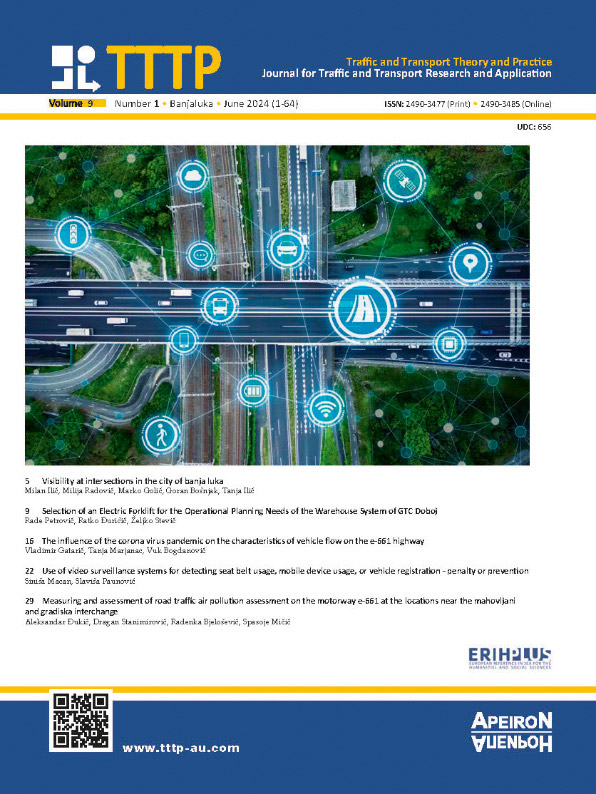Use of video surveillance systems for detecting seat belt usage, mobile device usage, or vehicle registration - penalty or prevention
DOI:
https://doi.org/10.7251/JTTTP2401022MKeywords:
Artificial Intelligence, Deep Learning, Machine learning, Smart Systems, Violations, Preventive ActionAbstract
The concept of smart traffic or smart cities involves the use of a large amount of data collected in real-time and processed using available tools. Data is collected from various sources. One common source for traffic control is video or imagery. In many countries, camera systems are installed to monitor traffic, track speed, or oversee intersections. Data is collected and processed in operational centers, allowing for insights into vehicle registration, vehicle speed, and passengers. At the same time, significant risks in traffic arise from the use of mobile phones or smart devices while driving. Furthermore, research indicates that wearing seat belts significantly reduces the risks of traffic accidents. A common occurrence in traffic is that vehicles are unregistered and uninsured. At the same time, the use of video surveillance systems is associated with the protection of privacy and personal data, necessitating the need to find an optimal balance between the right to privacy and the right to a secure environment, including safe participation in public traffic. The aim of this study is to explore the possibility and analyze the use of video surveillance to analyze the use of video surveillance in detecting mobile phone usage and seat belt compliance while driving. The systems for detecting mobile phone usage or seat belt usage during driving can instantly provide information on a prominently displayed screen near the roadside for preventive action. The paper analyzes the use of such systems for prevention purposes, along with an analysis of the potential application of penalties to reduce identified risks in traffic.
